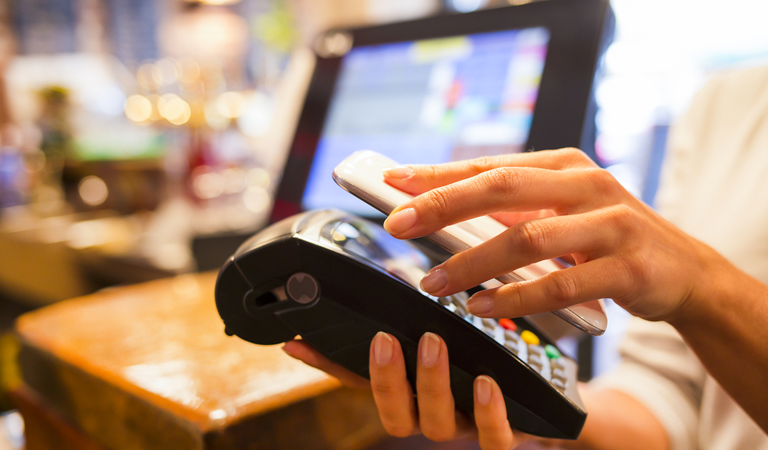
Fintech startups were the pioneers within this department, but it wasn’t long before digital-focused companies saw the business potential in utilizing technology and developing new payment solutions.
As for the consumers, the adoption rate is highly dependable on location and the general access to technology in everyday life.
For instance, in Hong Kong - there is still some hesitation to switch to digital payments, mainly because of the two following reasons: 1) users are undereducated about the way mobile wallets operate and 2) they worry about the security of their personal data.
Generally speaking, consumer usage is driven by personalized recommendations based on previous buying behavior, ease of use, loyalty benefits, and improved shopping experience (e.g. access to pre-orders, deliveries, first-access deals).
A lot of mobile wallets and digital banks are now issuing physical cards that extend the benefits even further; here’s how.
Mobile wallet apps enable you to check and control your balance, transfer funds, view transaction history, which makes them rather handy and user-friendly. In addition to this, some mobile wallets offer personalization options such as uploading your profile image and adjusting some of the settings.
Best of all, you can block your card through your mobile wallet account in case there is real risk it might be misused by a third party. For instance, our Unicard App (available both for iOS and Android devices) enables you to immediately block your own card in case you notice some suspicious transactions or if you lose your card. No more complicated and time-consuming procedures and ID authentication protocols that involve contacting your chosen bank and asking for your card to get blocked. Now, you can do so with just a few clicks.
Some mobile wallets have a strict ID recognition built-in. We at Unicard have introduced a new function called Touch ID Login Service in order to ensure only the true account holder can access sensitive data. Every single operation is in accordance to the highest security standards.
For merchants who accept mobile wallet payments, benefits include a high level of security, faster payments and greater customer satisfaction, as well as less burden on the cash management operations.
In addition, because of the complementing physical card, businesses can reinforce the relationships they have with their loyal customers by offering them special deals which are easily transmittable and redeemable.
In China, companies are trying to get closer to the younger generations who make the majority of smartphone users, which is why many businesses have rolled-out digital payment services. This has caused customer appeal, not just because of the convenience these payment methods brought, but also because they are very cost-efficient. Other countries within the Middle East region and Africa have been using new technologies to give access to funds to those in need.
But, even though cashless societies are said to be our future, this transition is not happening at a rapid speed. Cash is still very important, especially in the context of financial inclusion. Cash payments may be declining (some estimate at a rate up to 10% per year), but they are not likely to go away completely any time soon.
This is where a physical card can help. While you’re using your mobile wallet to keep your finances in one place and organize your budget and transactions, a prepaid card is there when you’re in need for cash money. For example, when it comes to showing appreciation for waiters, caterers and service providers through a tip, or giving allowance to your child - cash is still the dominant financial form.
Companies can enjoy multiple benefits from combining physical cards and digital payments, especially in the segment of managing 1) employee expenses and 2) payrolls.
Regardless of the industry they operate in, businesses always face small, fragmented expenses they occasionally cover from month to month, but not on a strict regular basis. These expenditures are typically not large as they are fluid and flexible; they are not the main items within the defined company budget.
However, the specificity of this type of costs can bring additional burden to the corporate budget, especially with hidden costs that are often disregarded. These usually come in the form of pricey reconciliation fees.
Luckily, with a card program, companies can efficiently manage these costs and avoid unnecessary waste of their financial resources. Employee’s card can be loaded with funds in just a couple of clicks; the card holder can then easily make purchases both online or in physical stores.
On the other hand, payroll cards remove a ton of administrative paperwork from the equation and are truly an eco-friendly solution. The payroll process is automated and it can easily be integrated with any payroll service provider. Paper checks and fees are now eliminated, which creates a win-win situation for all the parties involved in the process.
As you can see, mobile wallets and physical cards are complementary services that combined allow you to enjoy additional benefits. In addition, it’s good to have in mind that not all stores and vendors have the advanced technology nor do they the resources to process direct contactless payments. Physical cards are great to fill in these gaps and ensure a seamless consumer experience for you.
If you want to explore how Unicard can help on that path, please check out our solutions or contact us directly!
UniCard